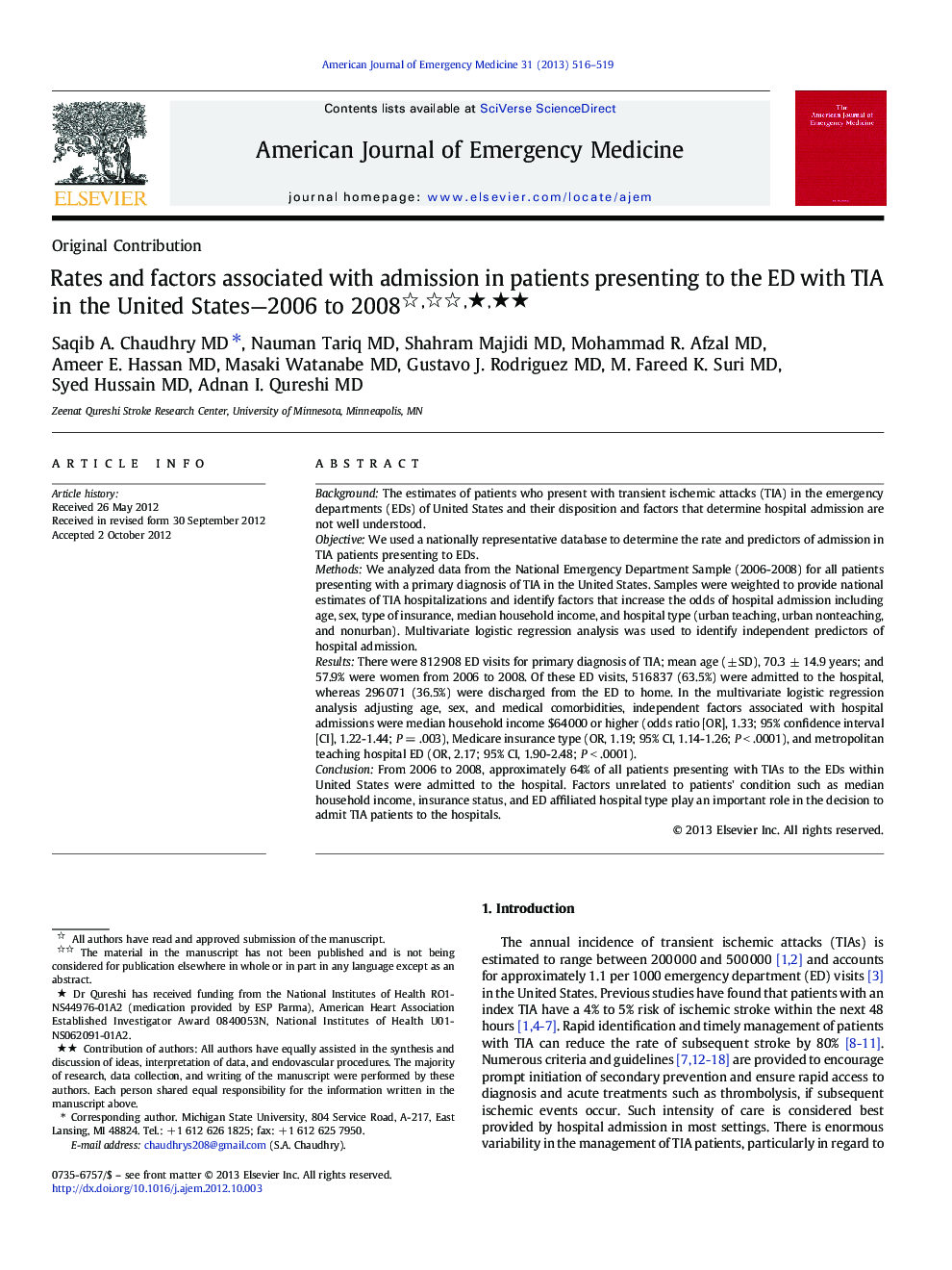| Article ID | Journal | Published Year | Pages | File Type |
|---|---|---|---|---|
| 3223822 | The American Journal of Emergency Medicine | 2013 | 4 Pages |
BackgroundThe estimates of patients who present with transient ischemic attacks (TIA) in the emergency departments (EDs) of United States and their disposition and factors that determine hospital admission are not well understood.ObjectiveWe used a nationally representative database to determine the rate and predictors of admission in TIA patients presenting to EDs.MethodsWe analyzed data from the National Emergency Department Sample (2006-2008) for all patients presenting with a primary diagnosis of TIA in the United States. Samples were weighted to provide national estimates of TIA hospitalizations and identify factors that increase the odds of hospital admission including age, sex, type of insurance, median household income, and hospital type (urban teaching, urban nonteaching, and nonurban). Multivariate logistic regression analysis was used to identify independent predictors of hospital admission.ResultsThere were 812 908 ED visits for primary diagnosis of TIA; mean age (± SD), 70.3 ± 14.9 years; and 57.9% were women from 2006 to 2008. Of these ED visits, 516 837 (63.5%) were admitted to the hospital, whereas 296 071 (36.5%) were discharged from the ED to home. In the multivariate logistic regression analysis adjusting age, sex, and medical comorbidities, independent factors associated with hospital admissions were median household income $64 000 or higher (odds ratio [OR], 1.33; 95% confidence interval [CI], 1.22-1.44; P = .003), Medicare insurance type (OR, 1.19; 95% CI, 1.14-1.26; P < .0001), and metropolitan teaching hospital ED (OR, 2.17; 95% CI, 1.90-2.48; P < .0001).ConclusionFrom 2006 to 2008, approximately 64% of all patients presenting with TIAs to the EDs within United States were admitted to the hospital. Factors unrelated to patients' condition such as median household income, insurance status, and ED affiliated hospital type play an important role in the decision to admit TIA patients to the hospitals.
